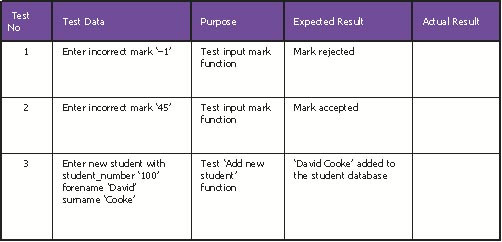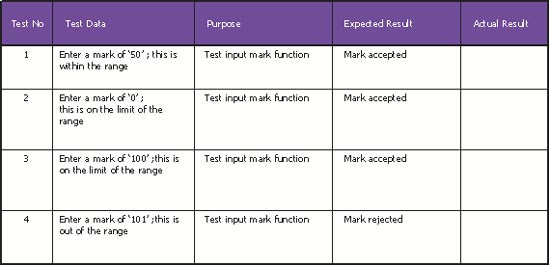The system life cycle is a series of stages that are worked through during the development of a new information system.
A lot of time and money can be wasted if a system is developed that doesn’t work properly or do exactly what is required of it.
A new system is much more likely to be successful if it is carefully planned and developed.

Feasibility study
The first stage of the system life cycle
This is an investigation that is carried out by a systems analyst to find out what the main problems are with the existing system and if it is technically possible and cost-effective to solve these problems by developing a computer based solution.
Feasibility report contents
- A description of the existing system outlining what is being done and how it is being done;
- A set of problem statements describing exactly what the problems are with the existing system;
- A set of system objectives which describe what the new system must be able to do;
- A description of some alternative solutions;
- A description of the technical, economic, legal and social factors that have been considered;
- A recommended course of action.
Analysis
During the analysis stage systems analysts investigate the existing system to identify exactly what the problems are with the existing system
Systems analysts will use a variety of fact-finding methods to gather information for example
- Questionnaires
- Interviews
- Observation
- Examining documents
Design
- Alternative possible solutions are identified
- Alternative solutions evaluated
- The best solution is identified
A design specification is produced containing information about:
- Input
- Output
- Data storage
- User interface
- Backup and recovery procedures
- Security procedures
Test plan Typical format for a test plan

Implementation
This stage involves:
Setting up the system so that it matches the design specification
Testing carried out using the plan to make sure that all the parts of the system work correctly with normal, extreme and erroneous data
- Normal test data is used to check that a system can handle the sort of data that would be expected during day-to-day use
- Extreme test data is used to check that a system can cope with data that lies on the boundaries of what is acceptable
- Erroneous (or exceptional) test data is used to check that a system can identify data that is wrong and reject it
Testing using normal, extreme and erroneous data

Installing the new system
Might include:
- Installing any new hardware and software;
- Transferring data from the existing system to the new one;
- Training users how to operate the new system
Producing documentation
Technical documentation
- the system design specification;
- systems flowcharts;
- data flow diagrams;
- a description of the various parts of the system and what each one does;
- screen layouts and user interface designs;
- the test plan.
User documentation
- a description of what the system is designed to do;
- minimum hardware and software requirements of the system;
- instructions on how to load and run the system;
- detailed instructions on how to operate each part of the system;
- Error messages, their meaning and how to deal with them.
- Where to get more help, such as telephone support lines and on-line tutorials.
Post-implementation review
Carried out after the new system has been running for a few weeks or months to identify any modifications that may need to be made.
Maintenance
A new information system may need to be changed due to:
- Change in needs of user
- Problems not found during testing
- Improvements required in the way the system works
